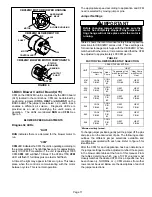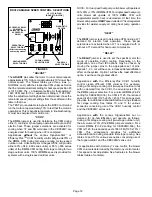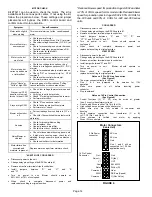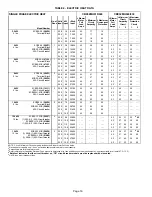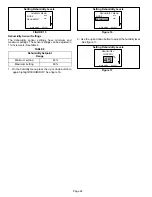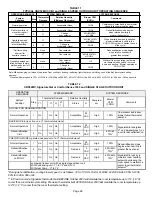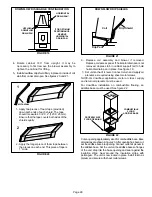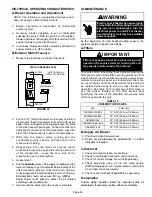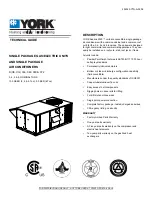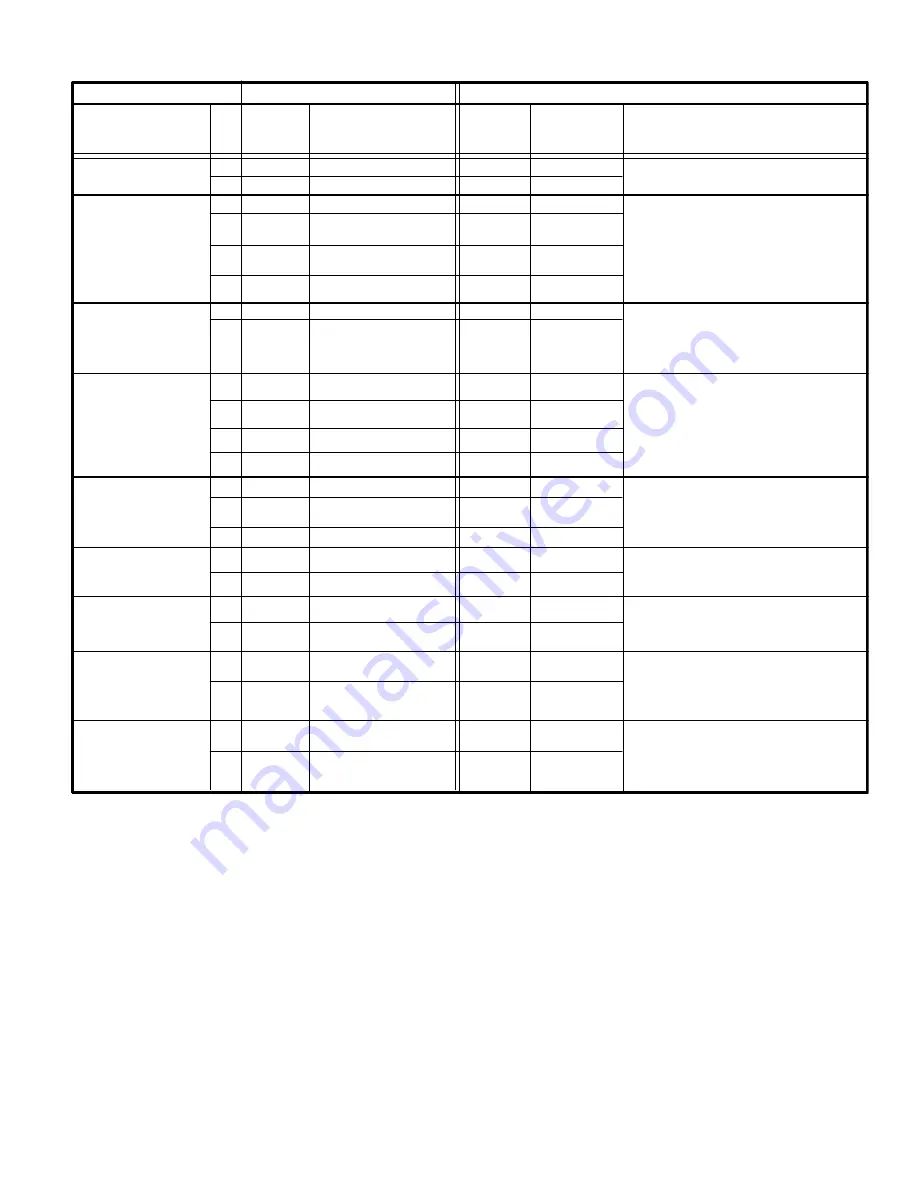
Page 25
Change to
Slightly over setpoint (1)
Thermostat
Demand
***
Compres-
sor Speed
Blower CFM
(COOL)
*Relative Humidity
(Efficiency
Plus
Lights)
Comments
Note−When changing unit mode of operation from cooling to heating, indicating lights that are on will stay on until the first thermostat heating
demand.
SYSTEM DEMAND
SYSTEM RESPONSE
Y1
Acceptable (None)
Y1
Low
40% of COOL
Low
40% of COOL
Demand
Satisfied
Slightly over
setpoint (1)
Off
Off
Y1
Slightly over setpoint (1)
High
**60%/65%/70%
of COOL
Dehumidification mode begins with next
thermostat demand after initial thermo-
stat demand is satisfied.
Y1
Acceptable (None)
Low
40% of COOL
Y1
Change to
Significantly over
setpoint (2 or more)
High
If humidity increases significantly over set-
point or if slide switch is moved significant-
ly, unit will immediately go into dehumidifi-
cation mode (in presence of thermostat de-
mand).
Y1
Y1
Over Setpoint
Change to
Acceptable (None)
High
High
COOL
None
Acceptable (None)
Off
Off
Y1
Acceptable (None)
Low
40% of COOL
Y2
Acceptable (None)
High
Y2
Change to
Slightly over setpoint (1)
High
Y2
Acceptable (None)
High
Blower immediately changes speed in
response to thermostat demand.
None
Slightly over setpoint (1)
Off
Off
Y1
Slightly over setpoint (1)
Low
None
Y2
Slightly over setpoint (1)
Slightly over setpoint (1)
Off
Off
High
None
Significantly over
setpoint (2 or more)
Off
Off
Y1 or Y2
High
None
Over setpoint
(1 or more)
Change to
Acceptable (None)
Y1 or Y2
High
Off
Off
While unit is not operating (no thermo-
stat demand) slide switch is moved
down and back up. Blower and com-
pressor operate at high speed until next
thermostat demand.
When humidity demand is satisfied,
blower immediately shifts to the COOL
CFM in order to hasten the end of the
cycle. Unit can only shift out of high
speed compressor operation at begin-
ning of next cycle.
If humidity increases significantly over
setpoint or if slide switch is moved, unit
immediately goes into dehumidification
mode (in presence of thermostat de-
mand).
TABLE 10
Reduced blower speed
(dehumidification speed) begins imme-
diately with thermostat demand.
Dehumidification mode (high speed com-
pressor) begins with next thermostat de-
mand after initial demand is satisfied.
Significantly over
setpoint (2 or more)
TYPICAL CBX32MV, CCB1 and TWO−SPEED OUTDOOR UNIT OPERATING SEQUENCE
Step
OPERATING SEQUENCE
System
Condition
1
2
3
4
1
2
1
2
3
4
1
2
3
1
2
1
2
Call for humidity re-
moval during 1st
stage thermostat
demand.
Significant increase
in humidity
during thermostat
demand.
Humidity demand
satisfied during
thermostat
demand.
Call for humidity re-
moval during 2nd
stage thermostat de-
mand.
Normal operation
1
2
1
2
*Call for 1st stage
cooling after call for
humidity removal.
Call for 2nd stage
cooling after call for
humidity removal.
Call for cooling after
significant increase in
humidity.
Humidity demand sat-
isfied between thermo-
stat demands (unit off
cycle).
1
2
Y1
Y2
Acceptable (None)
Acceptable (None)
Low
40% of COOL
High
Compressor demand and indoor blower
speed follow thermostat demand.
*IMPORTANT-If power to unit is turned on with CCB1 calling for humidity removal, outdoor unit may be locked into high speed indefinitely. To
reset, move humidity slide switch all the way down then back up to desired setpoint (with unit running)
** Reduced blower speed is 70% of cool for 018/024 and 024/030 units, 65% of COOL for the −036 units; 60% of COOL for −048 and −060 units.
***If the two−speed control on a two−speed outdoor unit is set for LATCH 2 (15 minutes) or LATCH 3 (30 minutes), the compressor will latch into
high speed after a Y1 demand has occurred for that period of time.
COOL
COOL
40% of COOL
COOL
COOL
**60%/65%/70%
of COOL
**60%/65%/70%
of COOL
**60%/65%/70%
of COOL
**60%/65%/70%
of COOL
**60%/65%/70%
of COOL

